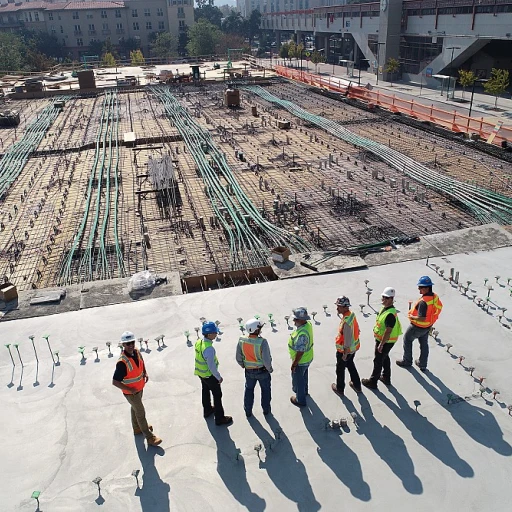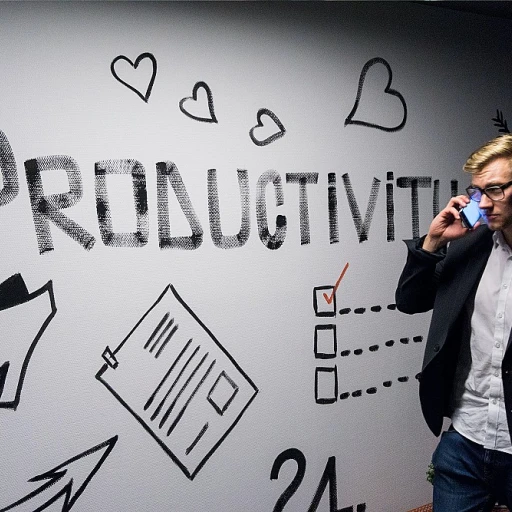
Understanding Why Employees Leave
Why Employees Choose to Move On
In today’s dynamic job market, organizations are often grappling with the challenge of losing valuable talent. Understanding the reasons behind an employee's decision to leave is pivotal for any company aiming to boost overall retention rates. The cost of replacing employees is significant, often impacting not only the bottom line but also the morale of remaining team members. Firstly, one of the most common reasons employees decide to leave is the lack of growth opportunities within the organization. Employees yearn for a path that allows them to develop their skills and advance their careers. Companies that do not invest in employee development are at risk of losing their top talent to competitors offering better career progression pathways. Secondly, workplace culture plays a critical role in employee satisfaction. A supportive company culture that values inclusivity and engagement often keeps employees content and motivated. When the workplace environment is lacking, employees may not feel supported or valued, pushing them to seek better conditions elsewhere. Learn more about the impact of a supportive culture on retention. Another significant factor contributing to employee turnover is communication. Effective feedback and open lines of communication can bridge gaps that lead to misunderstandings and dissatisfaction. Employees who feel ignored or undervalued may look for a work environment where their voices are heard and appreciated. Finally, the rigid nature of traditional work arrangements does not fit well with modern employees’ expectations. Today, flexible work arrangements have become a necessity rather than a luxury. Employees are increasingly valuing work-life balance, and are more inclined to stay with companies that accommodate this need. To delve deeper into the strategies of mastering employee retention, including understanding the intricacies of these elements, explore insightful resources and expert recommendations. Understanding why employees leave is just the first step in a comprehensive approach to retaining valued team members.Creating a Supportive Company Culture
Fostering a Positive Work Environment
Creating a supportive company culture is crucial for improving employee retention. Employees thrive in an environment where they feel valued, respected, and safe. To build this foundation, start by promoting inclusivity and diversity within your team. A diverse workforce can enhance creativity and innovation, providing new perspectives and solutions to challenges. Another essential aspect of a supportive culture is recognition. Regularly acknowledge and celebrate achievements, both big and small. This doesn't have to be elaborate—a simple "thank you" or a shoutout in a team meeting can go a long way. Feeling appreciated boosts morale and strengthens loyalty to the company. Additionally, emphasize work-life balance by encouraging employees to take breaks and use their vacation days. Overworking can lead to burnout, which is a significant contributor to employee turnover. Create policies that support wellness and encourage a balanced approach to work and personal life. This will not only retain talent but also improve overall job satisfaction. Open communication is another pillar of a supportive culture. As discussed in the section on feedback, providing employees with platforms to express their ideas and concerns creates a safe and trusting environment. When employees feel heard, it fosters a sense of belonging, which is key to retention. For more effective strategies on how to nurture your best talent, explore our detailed guide on keeping your best employees. By cultivating a positive company culture, you lay the groundwork for a loyal and committed team.The Role of Feedback and Communication
Empowering Exchange: The Value of Constructive Dialogue
Communication is the lifeblood of any organization. Facilitating open and honest communication within the workplace is essential for fostering a sense of belonging and transparency. It’s not enough for leaders to simply keep their employees informed; they must also encourage and actively listen to the feedback received. A culture that promotes regular feedback loops allows employees to voice their concerns, share ideas, and provide insights that could lead to improvement. When employees feel heard, they feel valued. This can significantly impact employee satisfaction and, subsequently, retention rates. To create an environment where feedback is not only welcomed but also acted upon, establish regular check-ins, such as one-on-one meetings and team gatherings, which provide structured opportunities for dialogue. Encourage managers to engage in consistent feedback practices—both giving and receiving—to nurture a two-way communication channel. It’s crucial to ensure that the feedback process is constructive and solutions-focused. Feedback should not be limited to evaluations or corrections but should also include recognition of achievements and a focus on personal and professional growth. By integrating communication effectively, companies can premiere a positive workplace culture that underscores inclusion and forward-thinking. This brings us into the next essential component, where we explore the significance of flexible work arrangements to further boost organizational effectiveness and employee commitment.Flexible Work Arrangements: A Modern Necessity
Embracing Flexibility in the Workplace
In today's fast-paced world, the traditional 9-to-5 workday is becoming increasingly outdated. Employees are seeking more flexibility in their work arrangements, which has become a crucial factor in job satisfaction and retention. By offering flexible work options, companies can cater to the diverse needs of their workforce, ultimately leading to happier and more loyal employees.
Flexible work arrangements can take various forms, such as remote work, flexible hours, or compressed workweeks. These options empower employees to balance their professional and personal lives more effectively, reducing stress and burnout. When employees feel that their employer values their well-being, they are more likely to remain committed to the organization.
Moreover, flexibility can enhance productivity and creativity. Employees who have the freedom to choose their work environment and schedule often experience increased motivation and focus. This autonomy fosters a sense of trust and respect between the employer and employee, strengthening the overall company culture—a theme explored in the section on creating a supportive company culture.
It's important to note that while flexibility is highly beneficial, it requires clear communication and expectations. As discussed in the section on feedback and communication, establishing guidelines and maintaining open lines of communication are essential to ensure that both the company’s goals and employees' needs are met.
By embracing flexible work arrangements, companies not only improve employee retention but also position themselves as forward-thinking employers in a competitive job market. This strategic approach can significantly contribute to a more engaged and satisfied workforce.
Investing in Employee Development
Enhancing Skills for Long-Term Commitment
Employee development is crucial for fostering a sense of loyalty and commitment among your team members. Investing in their growth not only benefits the employees by enhancing their skills and advancing their careers, but it also strengthens your organization by boosting overall performance and morale. To implement effective employee development strategies, first consider individual career aspirations and align them with the company's goals. This ensures that employees see a clear path for advancement within your organization, rather than looking elsewhere for opportunities. Offering personalized development plans, mentorship programs, and regular training sessions can help employees acquire new skills and knowledge, making them feel valued and invested in. In addition to formal training, encourage a culture of continuous learning by promoting on-the-job learning opportunities, cross-department collaborations, and peer-to-peer knowledge sharing. This approach not only broadens skill sets but also strengthens team dynamics and enhances creativity. Regularly review and update development programs to keep them relevant and effective. Gather feedback from employees about their development experiences, and be willing to adjust your strategies accordingly to better meet their needs and expectations. Remember, by prioritizing employee development, you're not just enhancing your team's capabilities but also reinforcing their commitment to your organization. This commitment will ultimately lead to improved retention rates and a more robust, loyal workforce.Measuring Success: Retention Rate and Employee Surveys
Assessing the Impact of Retention Efforts
As you implement various strategies to enhance employee retention, it's crucial to measure their effectiveness. Understanding why employees leave, fostering a supportive company culture, and offering flexible work arrangements are all essential steps. However, without proper assessment, it can be challenging to determine which initiatives are truly making a difference.
One of the most straightforward metrics to track is the retention rate. This metric provides a clear picture of how well your organization is retaining its employees over a specific period. A high retention rate often indicates that your strategies are working, while a low rate might suggest the need for reevaluation and adjustment.
Gathering Insights Through Employee Surveys
Beyond numbers, qualitative data from employee surveys can offer valuable insights into the workforce's sentiments. Regularly conducting surveys allows employees to express their thoughts on company culture, feedback mechanisms, and development opportunities. This feedback can guide you in refining your retention strategies, ensuring they align with employee needs and expectations.
Surveys should be designed to encourage honest responses, and it's essential to act on the feedback received. Employees are more likely to remain loyal when they see their input leading to tangible improvements in the workplace.
Adapting to Evolving Needs
The workplace is constantly evolving, and so are employee expectations. Regularly reviewing your retention strategies and adapting them to meet changing needs is vital. This might involve incorporating new technologies, offering more personalized development plans, or revisiting your flexible work policies.
By consistently measuring success and being open to change, your organization can maintain a motivated and committed workforce, ultimately boosting overall retention.







